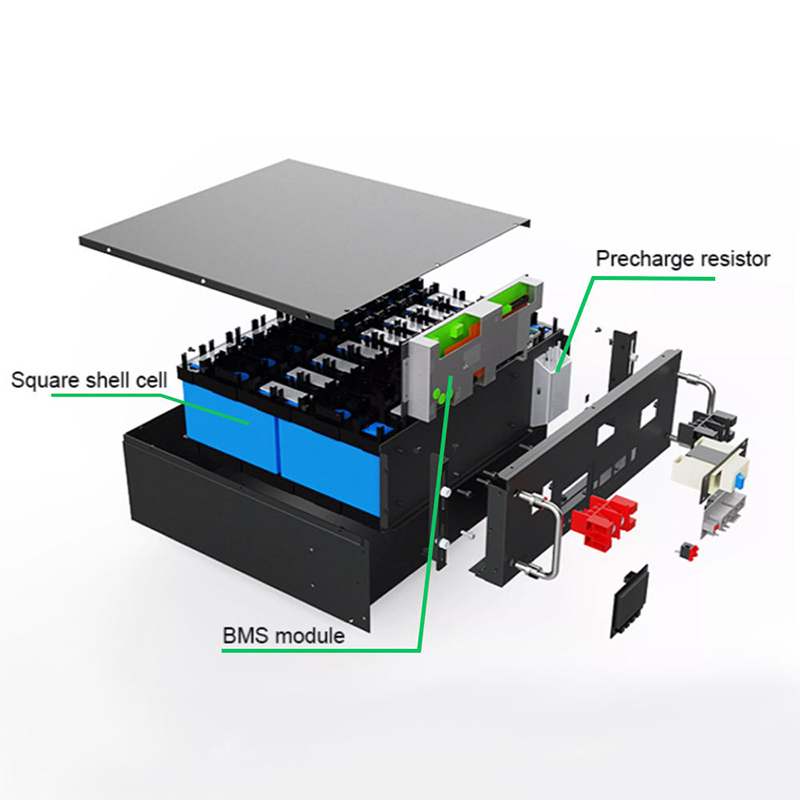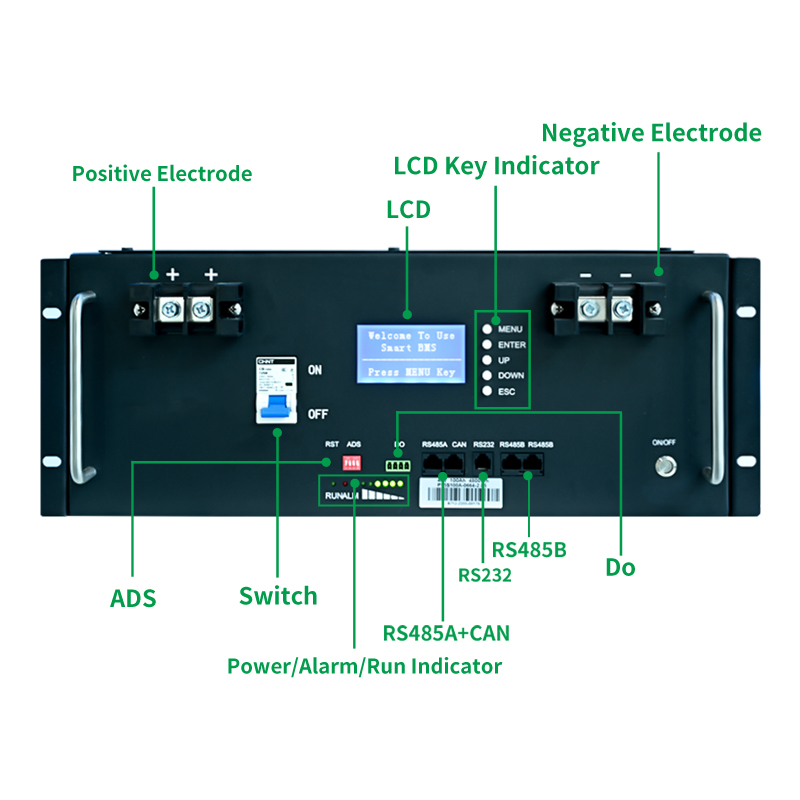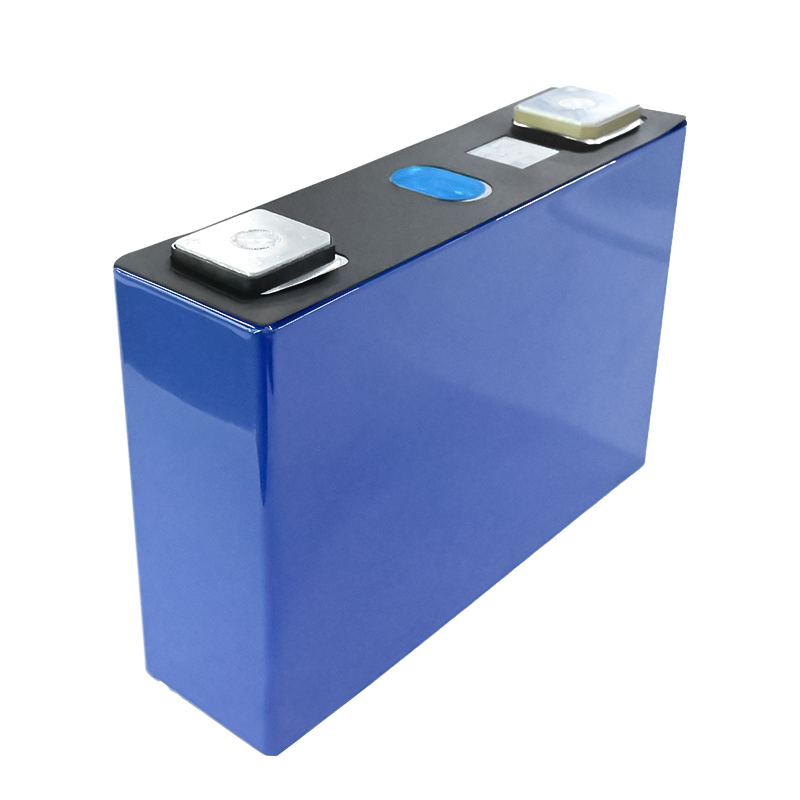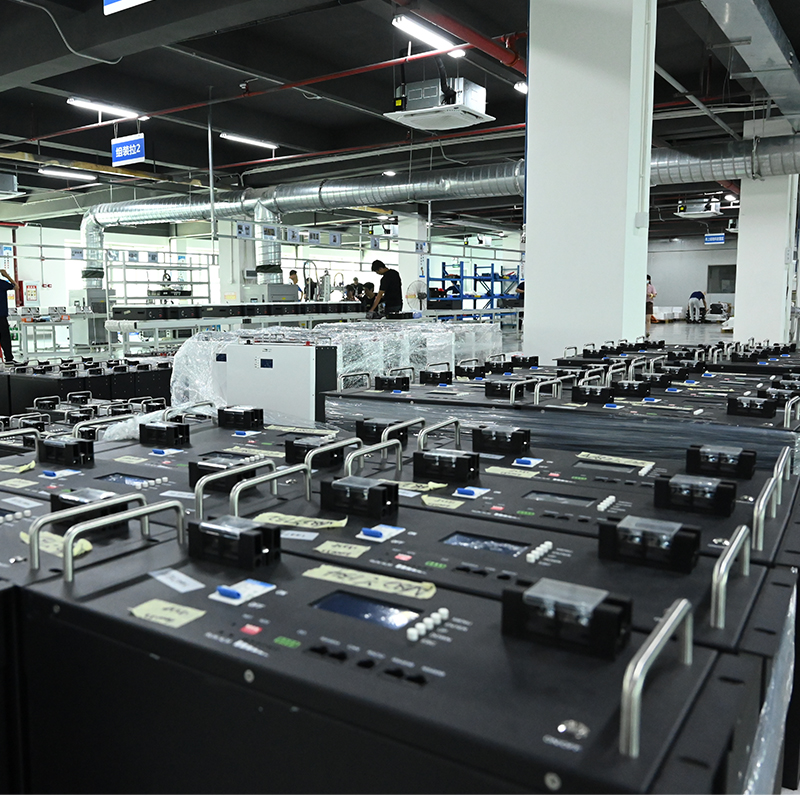SunArk solar battery, also known as a solar energy storage system or solar power battery, is a device that is used to store energy generated from solar panels or solar arrays. It is designed to capture and store surplus electricity produced during periods of sunlight and make it available for use when sunlight is not available, such as during the night or on cloudy days.
Brand:
SunArkMax charging current:
100AOperation Voltage:
42-54VdcLife cycles (80% DOD, 25%):
6000 CyclesLithium battery standard:
UL1642.IEC62619.UN38.3.ROHS.CE-EMCOperation temperature:
20°C to 60°C @60+-25% Relative HumidityStorage temperature:
o°C to 45*C @60+/-25% Relative HumidityStorage time / temperature:
5 months @ 25°C. 3 months @ 35*C: 1 month @ 45°C
A Solar Lithium Battery Typically Included The Following Components:
Lithium-ion Cells: The core component of a solar lithium battery is a series of lithium-ion cells. These cells are made up of positive and negative electrodes and an electrolyte solution. The lithium-ion chemistry allows for efficient energy storage and higher energy density compared to other battery technologies.
Battery Management System (BMS): The BMS is responsible for monitoring and managing the charging and discharging processes of the battery. It ensures the safety and longevity of the battery by preventing overcharging, over-discharging, and balancing the cell voltages.
Enclosure: The lithium battery pack is usually housed in a protective enclosure to provide physical protection and insulation. The enclosure is designed to withstand environmental factors such as temperature, humidity, and vibrations.
Voltage Regulator: A voltage regulator is often included in a solar lithium battery system to ensure a stable output voltage. It helps maintain a consistent voltage level even as the battery discharges.
Inverter: In some solar lithium battery systems, an inverter may be integrated to convert the DC electricity stored in the battery into AC electricity that can be used to power appliances and devices.
Control and Monitoring System: Many solar lithium battery systems include a control and monitoring system that allows users to monitor the battery's performance, check its charging status, and adjust settings. It provides real-time data, such as battery capacity, voltage, current, and state of charge.
Safety Features: Solar lithium batteries are equipped with safety features to prevent risks such as short circuits, overheating, and overcurrent. These features include thermal sensors, fuses, and protection circuits to ensure safe operation and prevent damage to the battery and connected devices.

What main functions does a solar lithium battery have?
Energy Storage: The primary function of a solar lithium battery is to store the excess electricity generated by solar panels. When the solar panels produce more electricity than is immediately required, the excess energy is stored in the battery for later use.
Load Shifting: Solar lithium batteries enable load shifting, which involves using stored energy during peak demand periods when electricity rates are higher or when solar power generation is insufficient.
Backup Power: Solar lithium batteries can provide backup power in the event of a power outage. This is particularly beneficial for off-grid systems or areas with unreliable grid infrastructure.
Voltage Regulation: Solar lithium batteries often include a voltage regulator or converter to ensure a stable output voltage.
Power Smoothing: Solar power production can fluctuate due to factors such as varying sunlight intensity and cloud cover. Solar lithium batteries can help smooth out these fluctuations by absorbing excess power during high generation periods and releasing stored power during low-generation periods. This can lead to a more stable and consistent power output.
Peak Demand Reduction: By storing energy during off-peak periods and discharging it during peak demand periods, solar lithium batteries can help reduce peak demand on the electrical grid.
Grid Independence: Solar lithium batteries enable greater grid independence by increasing self-consumption of solar power. By storing and utilizing the electricity generated on-site, users can reduce their reliance on external energy sources and have more control over their energy consumption.

The internal composition of lithium battery cells?
1. Positive Electrode (Cathode): The positive electrode is typically made of a lithium-based compound such as lithium cobalt oxide (LiCoO2), lithium manganese oxide (LiMn2O4).
2. Negative Electrode (Anode): The negative electrode is commonly made of graphite or other carbon-based materials that can intercalate lithium ions.
3. Separator: The separator is a thin, porous material that keeps the positive and negative electrodes physically separated while facilitating the exchange of lithium ions.
4. Electrolyte: The electrolyte is a conductive solution or gel that contains lithium salts dissolved in an organic solvent. It serves as the medium for lithium ion transport between the electrodes.
5. Current Collectors: Current collectors are usually metal foils, such as aluminum for the cathode and copper for the anode.

How does SunArk produce a complete solar lithium battery pack?
1. Calculate the exact battery bank capacity: Calculate the desired capacity and voltage for your battery bank based on your application needs.
2. Choose lithium batteries: Choose lithium batteries that meet your requirements and are designed for use in a rack configuration.
3. Choose a racking system: Select a racking system that is designed for the specific lithium batteries you are using.
4. Prepare the rack: Install the racking system and ensure it is securely mounted and stable.
5. Connect the batteries: Install the lithium batteries in the rack, following any guidelines provided by the battery manufacturer.
6. Configure the battery management system (BMS): If your lithium batteries require a BMS, install and configure it according to the manufacturer's instructions.
7. Test and verify: Once the batteries are properly racked and connected, perform thorough testing to ensure proper functioning and performance.
BTW, each battery will be charged to 100% before delivery.
FAQs:
Q1: Does SunArk support OEM/ODM?
A:Definitely, OEM&ODM service is supported with a certain quantity,including customize logo,package and label;
Q2: What's normally the production time?
A: The production time is normally 15 working days. but we will always prepare some stocks for popular models.
Q3: Can you provide DDP service?
A:Yes, if you are a personal customer and don't want to deal with the customs, we can provide DDP service to your address.
Q4: What about the warranty and how to claim?
A: Warranty period are 10 years since you receive the battery, our professional after-sales team will deal with all warranty issues.